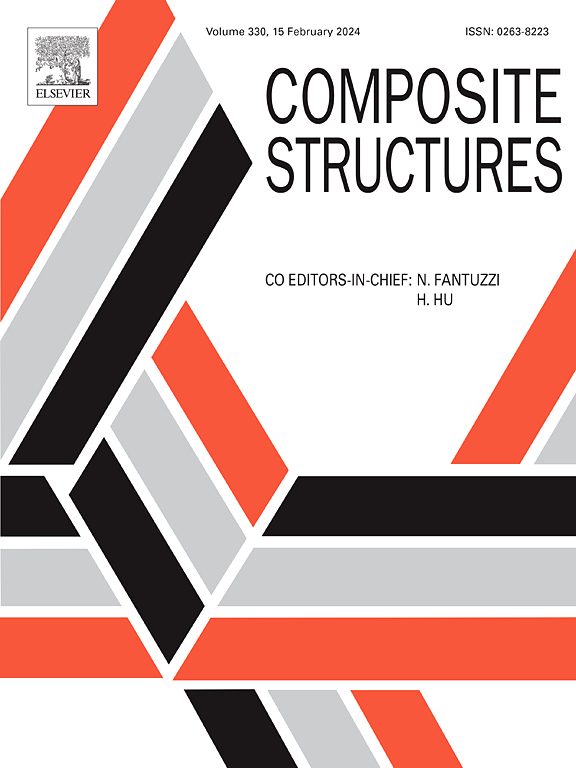Impact of nano zinc oxide and preloading on the distribution of pores and cracks in engineered geopolymer composites
IF 6.3
2区 材料科学
Q1 MATERIALS SCIENCE, COMPOSITES
引用次数: 0
Abstract
This paper introduces a streamlined method for assessing porosity in engineered geopolymer composite (EGC) materials, with and without nanoparticles doping, under varying loading conditions. Using a combination of X-ray computed tomography (XCT) and mercury intrusion porosimetry (MIP), the proposed approach simplifies the analysis by leveraging basic features of commercial software, avoiding the need for complex image processing or MIP. Additionally, digital volume correlation (DVC) is employed to assess stress distribution in the composite samples after loading. The study demonstrates the multi-scale capabilities of XCT by scanning samples at different resolutions and loading stages, providing a comprehensive view of material behavior. The study also explores the impact of zinc oxide (ZnO) nanoparticles on the mechanical properties of EGC. The results show that an optimal ZnO content of 1.5 % enhances the composite’s compressive strength (103.8 MPa), tensile strength (8.38 MPa), and tensile strain capacity (8.1 %). The pore structure is significantly influenced by preloading stages and factors such as fiber orientation and nanoparticle dispersion. DVC and volumetric strain analysis reveal that higher loading amounts reduce pore volume due to improved particle packing and pore refinement. This highlights the potential of XCT as a simple, cost-effective tool for porosity analysis, providing an efficient alternative to labor-intensive methods and offering significant environmental benefits.
求助全文
约1分钟内获得全文
求助全文
来源期刊

Composite Structures
工程技术-材料科学:复合
CiteScore
12.00
自引率
12.70%
发文量
1246
审稿时长
78 days
期刊介绍:
The past few decades have seen outstanding advances in the use of composite materials in structural applications. There can be little doubt that, within engineering circles, composites have revolutionised traditional design concepts and made possible an unparalleled range of new and exciting possibilities as viable materials for construction. Composite Structures, an International Journal, disseminates knowledge between users, manufacturers, designers and researchers involved in structures or structural components manufactured using composite materials.
The journal publishes papers which contribute to knowledge in the use of composite materials in engineering structures. Papers deal with design, research and development studies, experimental investigations, theoretical analysis and fabrication techniques relevant to the application of composites in load-bearing components for assemblies, ranging from individual components such as plates and shells to complete composite structures.
 求助内容:
求助内容: 应助结果提醒方式:
应助结果提醒方式:


